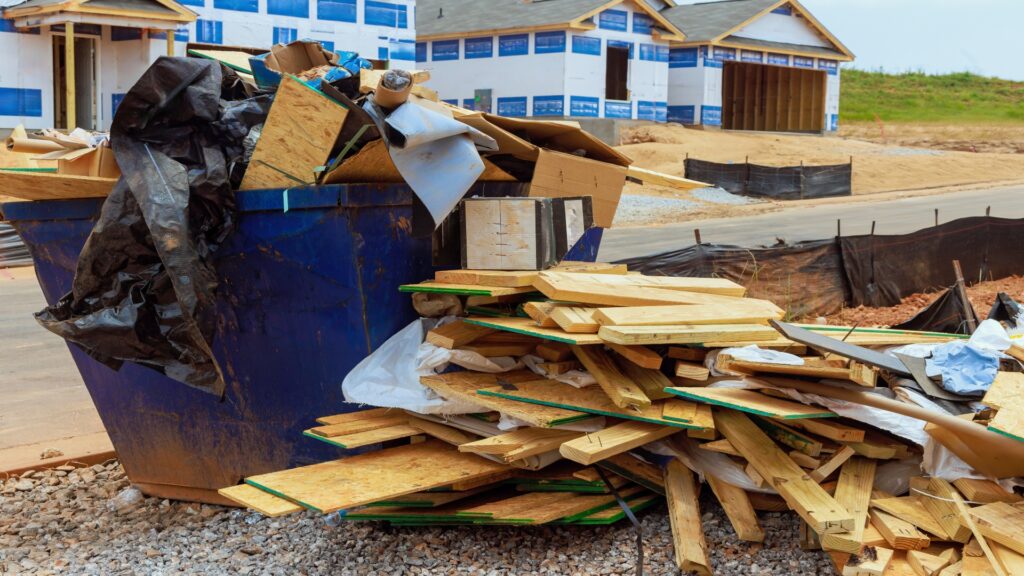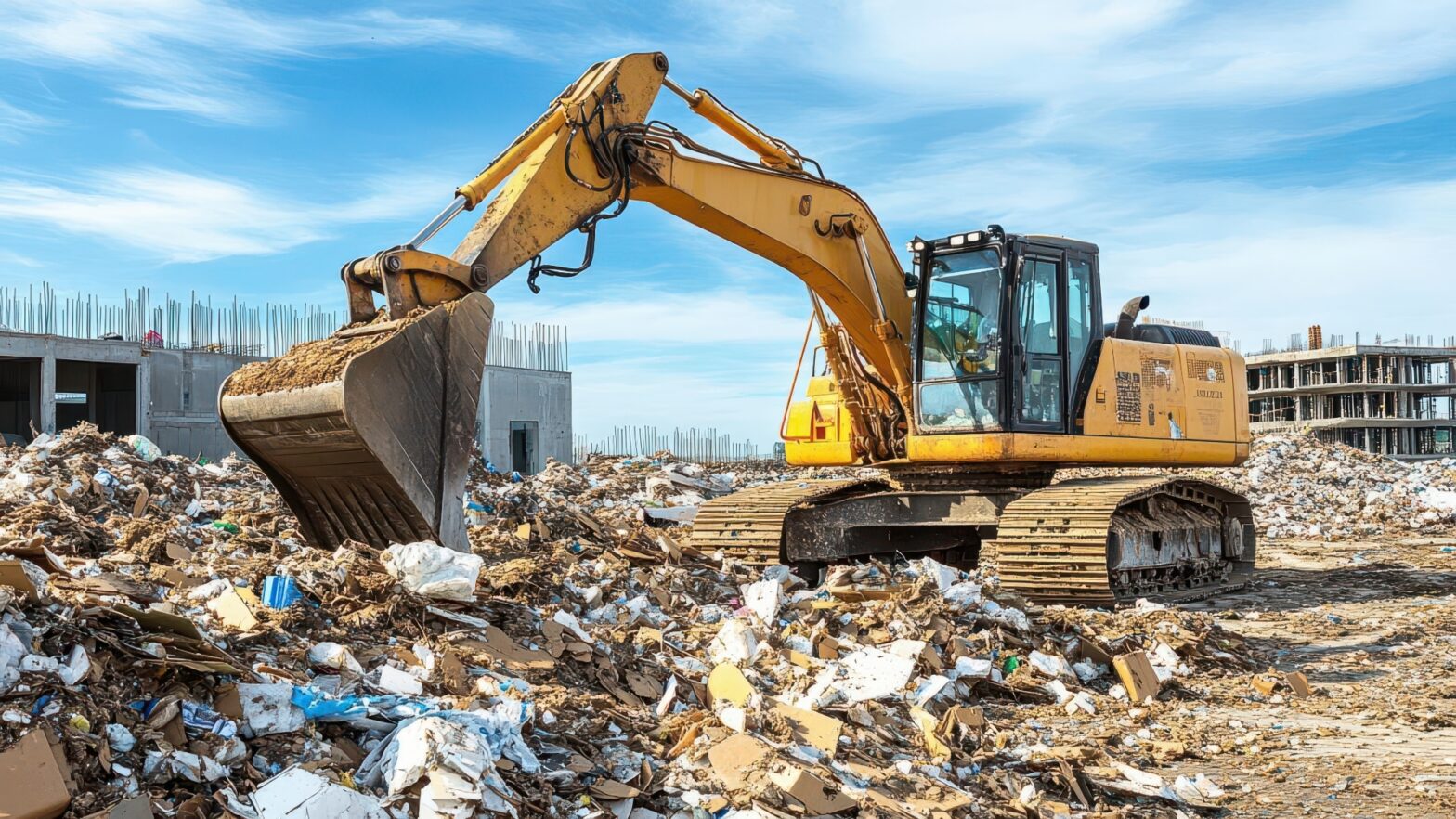Since construction sites can have negative impacts on the planet, building green isn’t just a trend but a necessity. Here are ways to reduce construction waste. From recycling materials to choosing eco-friendly products, these small steps can make a huge difference. Let’s get started!
1. Implement a Comprehensive Waste Management Plan
The foundation of any successful waste reduction strategy is a well-thought-out construction site waste management plan. Before breaking ground on your project, take the time to develop a detailed plan that outlines how you’ll handle various types of waste. This plan should identify potential waste streams, set reduction goals, and establish clear procedures for sorting, storing, and disposing of materials.
Also, include the disposal costs so your project can allocate funds as part of your site waste management plan. By having a plan in place from the outset, you’ll be better equipped to make informed decisions throughout the construction process. Remember, a good waste management plan is not static – it should be regularly reviewed and updated as the project progresses.
2. Embrace Prefabricated Components
One of the most effective ways to reduce on-site waste is to shift some of the construction process off-site. Prefabricated components, which are manufactured in controlled factory environments, offer numerous benefits when it comes to waste reduction. Not only do they minimize material waste during production, but they also reduce the amount of packaging and excess materials that typically accumulate on construction sites.
Moreover, prefabrication often results in higher quality and more precise components, which can lead to fewer errors and less rework on-site. This approach not only reduces waste but can also save time and labor costs.
3. Handle Hazardous Waste with Care
Construction sites often generate hazardous waste, including paints, solvents, and chemical containers. It’s crucial to have a clear plan for identifying, storing, and disposing of these materials safely and legally.
Some projects that are handling abrasive slurry waste may find it hard to transfer and dispose of it without causing any harm. If you’re faced with the same dilemma, you can use Husky double diaphragm pumps or other diaphragm pump brands, so it is easier for you and your workers to handle this waste fluid. Doing so will help you minimize your contributions to water pollution in your site.
4. Master the Art of Material Storage and Handling
Proper storage and handling of materials are essential for reducing waste and preventing unnecessary losses. Too often, materials are damaged due to improper storage, exposure to the elements, or mishandling. By implementing effective storage and handling practices, you can minimise waste and improve efficiency.
Investing in suitable storage solutions, such as weatherproof containers for sensitive materials, is a key step. Additionally, incorporating bunding & spill containment in liquid storage areas helps prevent leaks and spills, protecting both the environment and your materials. Train your staff on correct handling techniques, and ensure that materials are used on a first-in, first-out basis to prevent deterioration.
Remember, every piece of material saved from the scrap heap is a win for both your budget and the environment.
5. Embrace the Three Rs
In construction, the old adage “one man’s trash is another man’s treasure” couldn’t be more apt. Many leftover materials can find new life on the construction site or in future projects. Establish a system for sorting and storing reusable materials, and encourage your team to think creatively about how to repurpose items.
Recycling is the next best option for materials that can’t be reused directly. Set up clearly labeled local recycling stations on-site and educate your workers on proper sorting techniques. Many leftover materials, including metals, concrete, and wood, can be recycled and transformed into new products, reducing the demand for virgin resources.
6. Choose Eco-Friendly Building Materials
When it comes to reducing pollution and waste, the choices you make at the procurement stage can have a significant impact. Opt for eco-friendly building materials whenever possible. This might include recycled steel, reclaimed wood, or low-VOC (Volatile Organic Compound) paints and adhesives.
Additionally, consider the lifecycle of the materials you’re using. Sustainable materials that require less maintenance and have a longer lifespan can significantly reduce waste over the long term. While these materials might have a higher upfront cost, they often prove more economical and environmentally friendly in the long run.
7. Prioritise Equipment Maintenance and Servicing
Regular maintenance of construction equipment is crucial for reducing pollution and improving efficiency. Well-maintained machines operate more efficiently, consume less fuel, and produce fewer greenhouse gas emissions. Establish a rigorous maintenance schedule for all your equipment, and stick to it religiously.
This proactive approach not only helps reduce pollution but can also prevent costly breakdowns and extend the lifespan of your equipment. Remember, a well-oiled machine is a more environmentally friendly machine.
8. Implement Effective Dust Control Measures
Dust might seem like a minor issue, but it can have significant environmental and health impacts. Implement robust dust control measures to minimize air pollution and improve air quality on and around your construction site.
This might include regular watering of exposed soil, using dust screens or barriers, and covering stockpiles of dusty materials. For indoor work, consider using vacuum dust collection systems attached to power tools. These measures not only reduce pollution but also create a healthier work environment for your team.
To minimise waste and pollution on construction sites, installing rubber floor bunding around wash bays and storage areas can effectively contain spills and prevent contaminants from spreading.
In Conclusion
By implementing these ten strategies, you can significantly reduce waste and pollution in your construction sites. Not only will this help protect the environment, but it can also lead to cost savings, improved efficiency, and a better reputation for your business. As the construction industry continues to evolve, those who embrace excellent waste management practices will be well-positioned for success in the years to come.






























